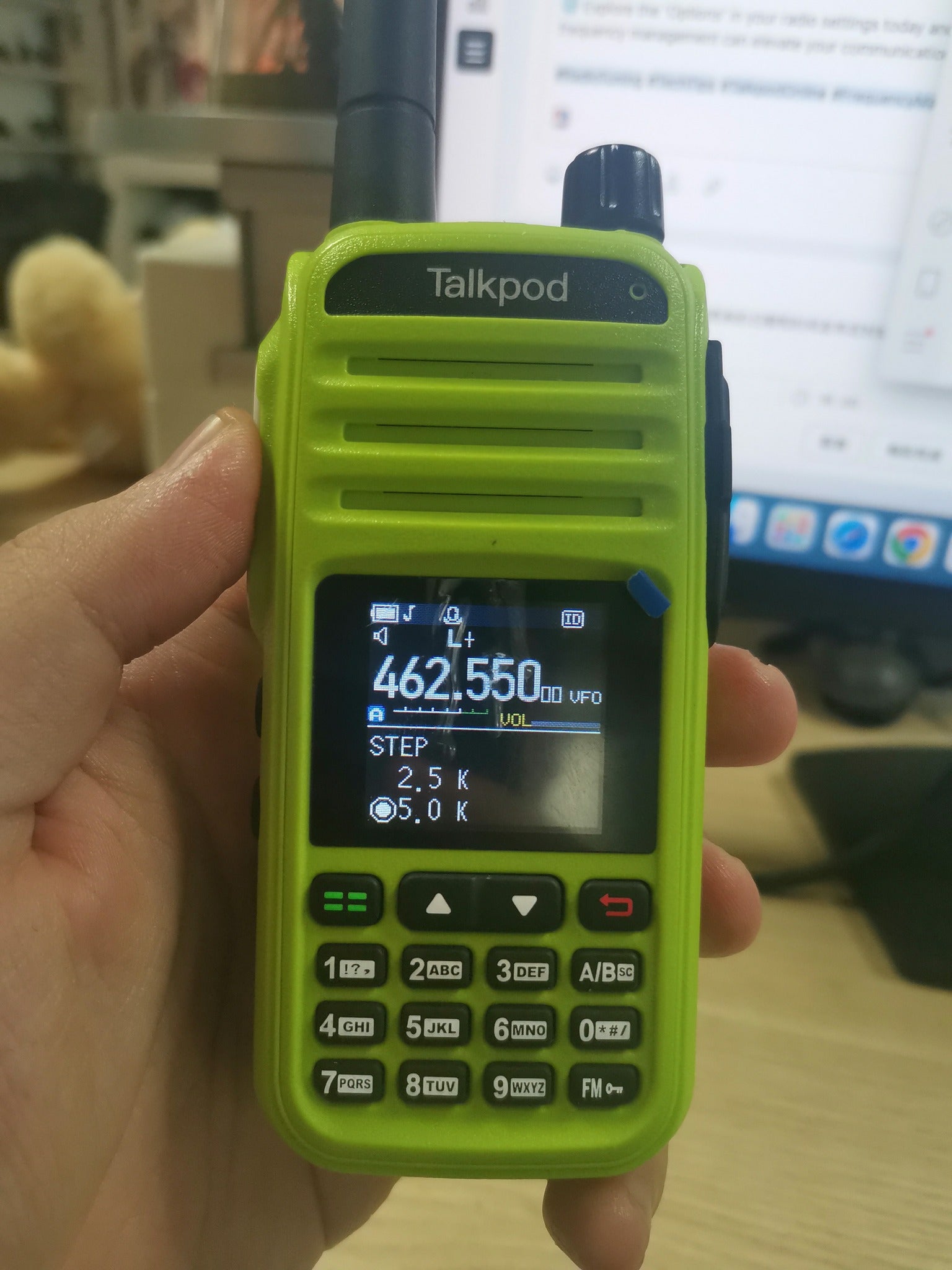Take your two-way radio communication to the next level by mastering these essential menu functions:
Menu 06: Scan Analog Subtones (SCAN CTCSS)
Activate Scanning: In Frequency Mode, scan for other transmitters' analog subtones on the current frequency. Scanning halts automatically upon detection. (Not available in Channel Mode)
Menu 07: Scan Digital Subtones (SCAN DCS)
Activate Scanning: In Frequency Mode, scan for other transmitters' digital subtones. (Not available in Channel Mode)
All: Automatically save detected subtones as both receive and transmit subtones for the current frequency.
Receive: Save only the received subtone.
Transmit: Save only the transmitted subtone.
Menu 09: Frequency Offset (SET)
Directly input the frequency offset from 00.000 to 99.995 in Frequency Mode, determining the difference between transmit and receive frequencies.
Menu 10: Frequency Offset Direction (S-D)
Off: No frequency offset between transmission and reception.
Negative (-): Transmit frequency is the sum of the receive frequency and the offset, typically used for accessing repeaters.
Positive (+): Transmit frequency is the receive frequency minus the offset, also used for repeater access.
Why It Matters:
These advanced settings enhance your radio's capability to interact seamlessly in diverse communication environments, from casual use to professional applications.












Leave a comment
All comments are moderated before being published.
This site is protected by hCaptcha and the hCaptcha Privacy Policy and Terms of Service apply.